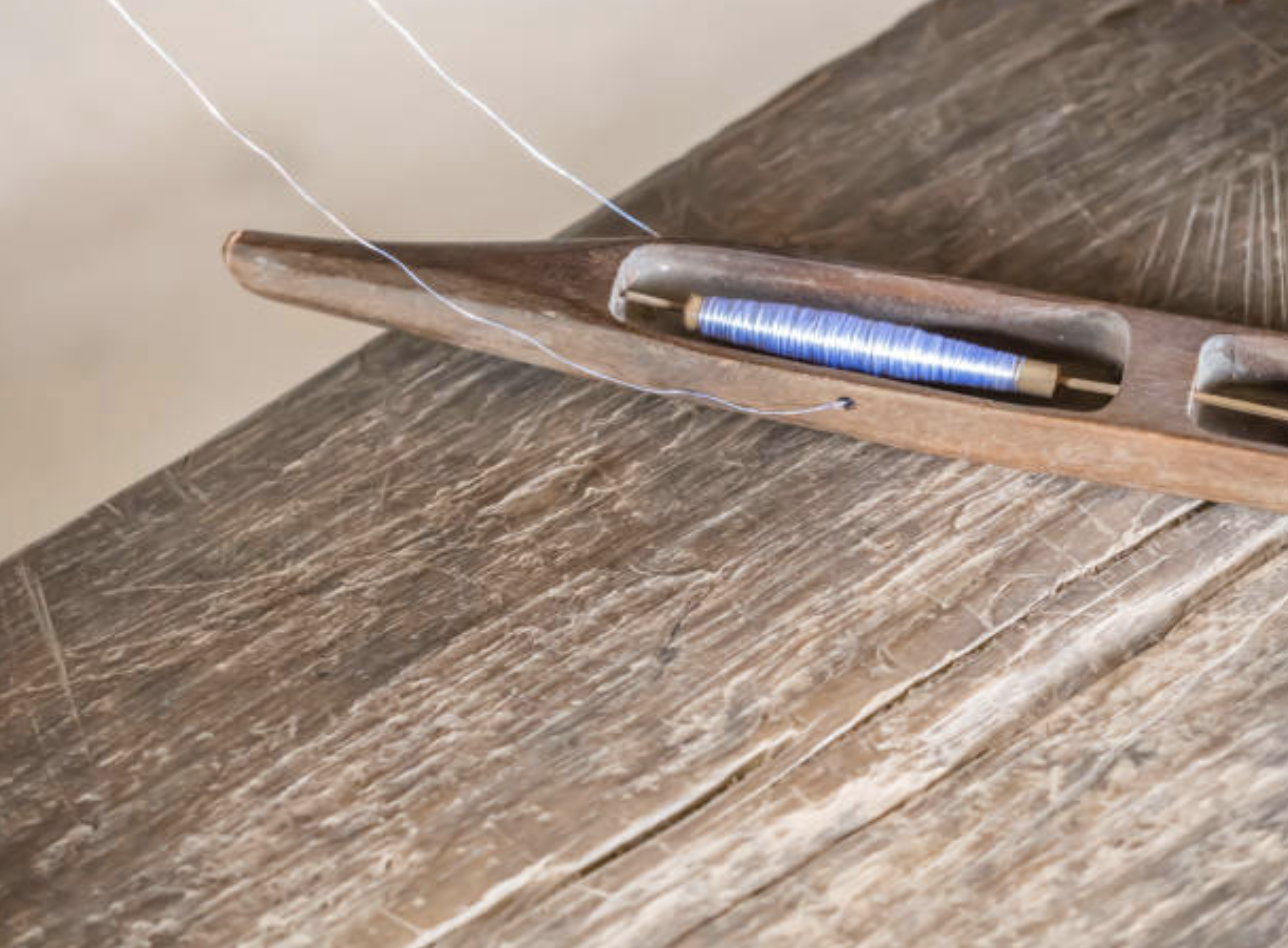Why do we call it Loom House?
What makes this project a "Loom House"? The mission of our work in all the ways we’ve done it over the years could be stated as: Weaving People and Place.
A nice image for the theme of weaving at the shoreline.
Ever since I was a kid I loved to do two things: goof around in nature, and make things with yarn. To my delight I saw that my two loves were interconnected: I loved the natural materials I got to explore in knitting and weaving, in all their animal and vegetable qualities, from lofty wool to soft cotton to slinky silk. And I noticed that the character of the materials lent themselves to different kinds of patterns in weaving. Take the picture above. The interlacing is tight, which keeps the slippery silk threads from sliding around and snagging. Below, you can see a very different fabric where longer woolly threads float along the surface:
Their woolly stickiness helps them stay put. An extra benefit: that also happens to create a double layered fabric that is extra warm as well as beautiful.
You may have worn a knitted sweater that works in the same way, like this one:
The white floats behind the black, and vice-versa: it's no accident that Scandinavian sweaters are warm!
To design and make textiles, you need to balance material, structure and use. The materials, like silk or wool, need a structure that best holds them. The combination of material and structure, such as a knitted sweater with long floats of yarn, then creates the fabric for its best use, a very warm sweater. The material and the use work together. Vernacular architecture is like this too, deriving its form from the marriage of local materials and the functional needs of its place.
But beyond utility, and even beauty, there’s something more. Once you’re done and the pattern has emerged on your fabric or sweater, the pattern itself can suggest another layer of meaning. For instance, in the wavy twill patterning in the first piece, the weave structure mimics flowing water, and even the colors suggest ocean waves. A natural inspiration is revealed to us. Weaving can be symbolic, but those meanings rest on the foundation of a deeply practical, material process.
Similarly, our Loom House weaves things together both literally and symbolically: close attention to process and place builds our sense of “home” bit by bit, experience by experience.
I have always been interested in how we imagine our relationship to the wider web in which we live, the fabric we are woven in. How does our home place influence us, how does it support and inspire us, and how aware are we of that woveness? We wanted to try the Living Building Challenge in part because we knew it would help us see many of the ways we are woven into the fabric of the land and community – things that might have been invisible to us before. We are much more aware now of the big systems of energy and water that cycle through this place, the plants and animals and people that contribute to its fertility and liveliness. We want to keep learning and participating as more-conscious actors in that ongoing conversation.
Our Loom House weaves and is woven in lots of ways, and your house is too.
The Water Cycle. (You’d never believe how many cute free images of it there are!)
All homes are woven into their place:
All are sited on their land, in response to conditions and inspirations. How did that happen where you live?
Sun and rain fall on your house, wind blows through. How do you interact with them?
Our experience of living weaves us into place, wherever our feet are planted:
We know our dependence on what our land provides, and our responsibility to care for it in return.
We can apprentice as weavers to natural opportunities and constraints, learning the ecological balance of our spot, finding a pattern of reciprocity as we grow into our place.
By paying attention over time we weave ourselves into the web of our home: its structure, its site, its community.
For all of us, material grounding plus lived experience equals Meaning:
We make a home that fits us and our place.
We see how we share a web of meaning-making with our neighbors, human and beyond. We learn what it can mean to belong, in a way that invites all others to belong as well.
What is the relationship between the material reality of your home, the way you experience living in it, and the meaning you make of it?
Written by Karen, Homeowner





